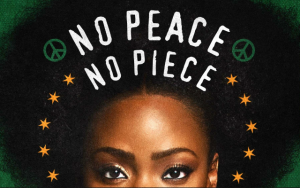Metro: Chi-Raq is South Side Chicago violence seen through the lens of Spike Lee
“The human spirit is a great thing,” says director Spike Lee on what he learned while doing research for his new film. The director spent six months in Southside Chicago, ‘talking to people, meeting people, getting the lay of the land,” before shooting a single frame of his anti gang violence movie Chi-Raq. “It was very important, not just meeting people, but people becoming comfortable with me. People opening up to me.”
The movie draws its story about a neighbourhood woman who convinces the wives and girlfriends of gang members to withhold sex from their men until the guys agree to put down their weapons from a Greek play first performed in 411 BC. but details the very modern problem of gun violence.
“At the end of the movie in that scene where everybody is dressed in white,” says Lee, “those women are not actresses. Those women are members of a group called Pain Over Purpose. They are mothers whose children, whose sons and daughters, have been shot down in the streets of Chicago. Those pictures they are holding up are pictures of their loved ones.
“The pain of a parent who has lost a child in any circumstance is something that no parent should have to go through. They all say that there is a hole in their spirit, in their soul that will never be replaced. Many of those mothers have tried to commit suicide and had various other problems since then but they are holding strong.”
The cycle of violence portrayed in the film, and acted out for real on the streets–during Chi-Raq’s thirty-eight day filming schedule 331 people were wounded and shot, 65 people were murdered in Chicago—was personal for one of the movie’s stars.
“Do you know Jennifer Hudson’s history?” asks Lee. “It is known knowledge that Jennifer’s mother, brother and nephew were murdered in Chicago. I think that’s extra gravitas that you have with Jennifer Hudson in this film. This is not an act for her. She got hit directly by gun violence on the Southside of Chicago.
“I didn’t want her to think that I was exploiting her. I knew I wanted her for the part but there was some length of time before I got the courage to approach her. Also when we did meet I was babbling. She said, ‘Spike, I know why you want me to do this film, so just stop. I’ll do it.’ I was trying to be sensitive and I turned out to just beat around the bush. I said, ‘I’ll just shut up and say thank you.’“
Lee is fearless in his handling of the material, taking chances narratively—the entire film is presented in verse—and visually, to tell the timely and hot button story of a “self-inflicted genocide.” Finding the mix of heartfelt storytelling and satire, says Lee, was crucial to the success of the film.
“It is not an easy thing to do,” he says. “I will make the great leap and say that if Stanley Kubrick was alive he would say it was hard to do it on Strangelove. I’d say the same thing for Kazan in A Face in the Crowd. I would say the same thing for Sidney Lumet for Network. It’s hard to do but it’s a great way to deal with serious subject matter.”

